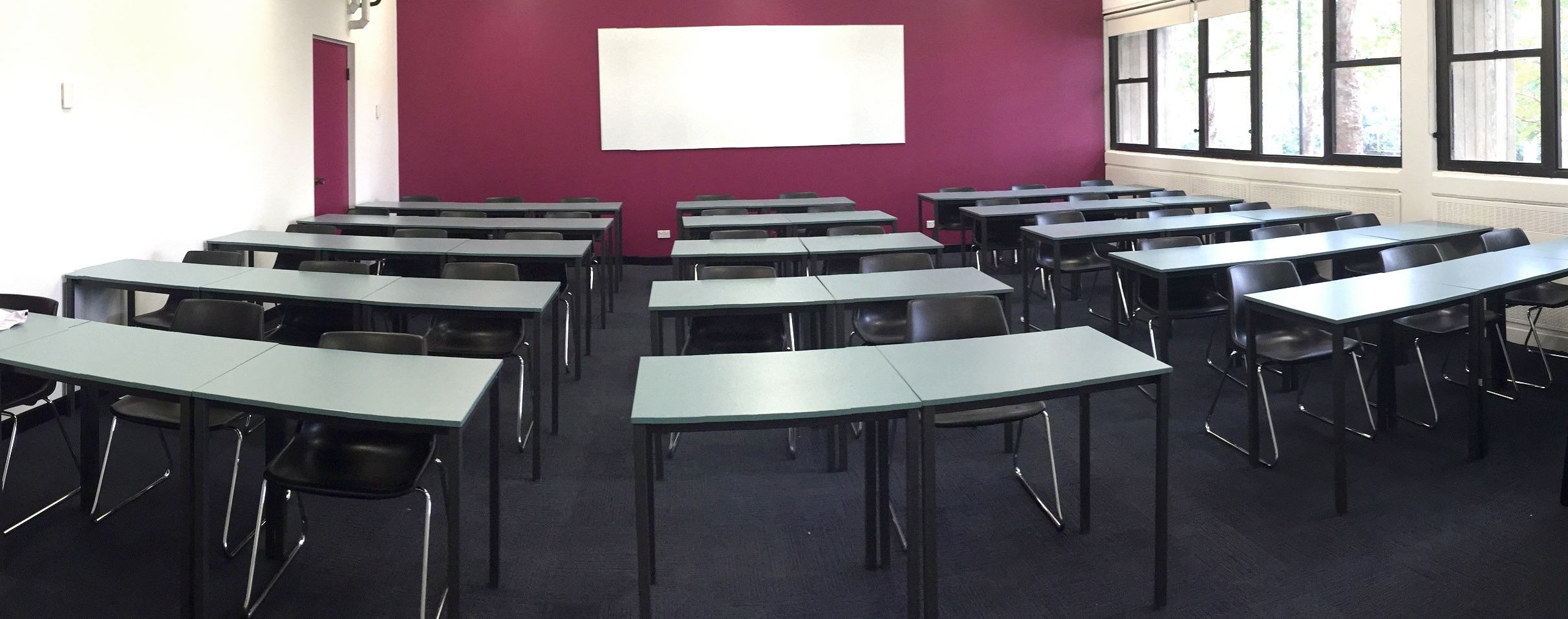Teaching spaces
Introduction
The design of Teaching Spaces across the university campus is to be based on:
- The desire to group areas that student need to access, to gain maximum efficiency and
- To encourage a stimulating learning environment, a heightened experiential and collaboration
- The proximity of the adjacent active and passive student areas
- The required interactions between staff and students, prospective students or the general public.
Although each space will be designed and developed in conjunction with the end users, all spaces are to be based on one of a small group of basic space types, to permit future flexibility of the space, and enable use of the space for different functions or future emerging needs.
All general teaching spaces are categorised and grouped according to their level of interaction between Lecturers / staff and students.
They are loosely grouped as:
- Computer/Digital Teaching space
- Laboratory teaching Spaces (Refer to next Section)
- Specialist Teaching Spaces (Refer to Following Section)
General Teaching Spaces
General Teaching Spaces
The term general teaching spaces will include the following individual spaces:
Links to the following spaces
| General Teaching Spaces | Collaborative Spaces | Group Teaching Spaces | Adjacent Facilities | Associated Ancillary Spaces |
|---|---|---|---|---|
| Tutorial Room | Formal Meeting Rooms | Theatrette | Tea Point | Plant Equipment |
| Large Tutorial Room (100+) | Informal Meeting Spaces | Theatre (<350) | Communal Space | IT Comms. Space |
| Theatre (500+) | Facilities | Cleaners Store | ||
| Computer/Digital Teaching Spaces | Stage | Maintenance Store | ||
| Active Learning Spaces | Lecture Room | Meeting / Interview Room |
The term general teaching spaces will include the following individual spaces:
- Tutorial rooms for small to medium sized groups, Including Flexible Tutorial (Active Learning) Spaces
- Theatres and lecture halls for medium to large groups
- Collaborative and meeting spaces, such as:
- Small Meeting areas / spaces
- Meeting rooms
- Multi purpose spaces
- Ancillary spaces such as :
- Tea point / Kitchenette / cafe
- Staff facilities including toilets/change rooms etc.
- Support facility spaces, such as:
- Maintenance store rooms, cleaners rooms & Stores
- Plant and equipment areas, for mechanical, IT communications etc.
General Design Requirements
All spaces are to be designed to meet the requirements of the relevant building regulations.
In line with the Universities access policy all general occupant spaces are to be designed to be accessible for mobility impaired persons.
Specific Design Requirements
All general teaching spaces are categorised and grouped according to their level of interaction between Lecturers / staff and students.
The spaces are to be designed to suite the individual arrangement options to enable educational delivery.
Flexible Tutorial Space Desks (Active Learning)
A number of Teaching spaces are to be designed as Active learning / Tutorial environments, which encourage:
- Student engagement
- Group discussion
- Collaboration
Other Variations & Options
For each zone or group of spaces additional areas/spaces may be required to meet the functional needs of the group of staff work flow and may include areas such as:
- Equipment Maintenance workshop areas
- Equipment storage areas
- Specific equipment Training areas.
Additional areas will be added as required for specific projects.
Design Planning
The Location of various teaching spaces are to be design to support the hub and spoke principle which is set out within the Macquarie University Concept Master Plan 2014. The hub and spoke principle loosely groups functional teaching spaces around a faculty hub zone.

